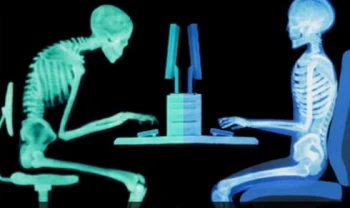
When it comes to choosing the right chiropractor for your needs, it’s important to understand the different options available. Just like any industry, there are conventional methods that are practiced by most professionals, and then there are specialized areas that are more focused on their approach.
Cervical chiropractic is a focused area within the chiropractic profession that provides precise, gentle, and effective care. As the name implies, cervical chiropractic is uniquely concentrated on the structural integrity of the neck and its influence on the nerve system of the body.
The cervical spine (neck) has a unique set of characteristics that require a focused approach for correction:
- It is the most freely movable part of the spine (most injury-prone)
- It is the most sensitive part of the spine to the nerve system (wraps around and protects the brainstem and upper spinal cord)
- It supports the weight of the head (8-13 pounds)
All these considerations are unique to the cervical spine and are some of the reasons why conventional manipulations may not be effective for many individuals. Cervical chiropractic accounts for all of these unique characteristics and provides solutions to maximize the effectiveness and safety of each adjustment.
What is the difference between cervical chiropractic and conventional chiropractic?
Conventional chiropractic is what many people are familiar with and includes generalized manipulation for the relief of muscle spasms, improvements in range of motion, and pain management. A typical experience in a conventional chiropractic practice includes a brief evaluation, a series of manipulations up and down each side of the spine at points of restriction, and then frequent follow-up treatments to maintain relief. Conventional adjustments twist, “pop”, or “crack” the spine to free up restricted spinal motion and are effective for many types of aches and pains.
Cervical chiropractic is a different experience. A thorough consultation and evaluation always come before any treatment. This allows for all of the correct information to be gathered in order for treatment to be customized to the needs of the individual. Some evaluation procedures typically performed include:
- Cervical imaging (to visualize and measure displacements in the neck)
- Postural evaluation (to appreciate the widespread effects of cervical displacements on body structure)
- Nerve system testing (to measure the decreased level of nerve system performance related to spinal stress)
- Spinal balance testing (to identify patterns of imbalance around the structure of the spine)
- Focused orthopedic or nerve system testing (based on the requirements of the case)
This data establishes a baseline for guiding the treatment plan, identifying priorities, and creating goals for progress over time.
One of the main differences between conventional chiropractic and cervical chiropractic is the adjustment process. Rather than twisting, popping, or cracking the spine, cervical chiropractic uses specialized adjusting tables and procedures that do not add any additional stress to the spine. This means that corrections are gentle, effective, and precise without cracking the neck.
Cervical chiropractic is corrective in nature, meaning that as patients progress, they require fewer adjustments and checkups. A primary objective of cervical chiropractic is to get the best possible results with the fewest adjustments needed. Rather than generally loosening up the spine, cervical chiropractic focuses on the increased structural stability of the spine from the top down.
What does cervical chiropractic help with?
When the alignment and mechanics of the cervical spine become compromised, there are a variety of side effects that will develop over time. Often these side effects (or “symptoms”) are the only warning signs of an underlying issue. Common side effects include:
- Neck pain
- Nerve pain in the arms/shoulders
- Headaches/migraines
- Dizziness/vertigo
- Face, jaw, and ear pain
- Tinnitus (ringing in the ears)
- Poor posture
- “crunching” sounds with neck movement
- Muscle imbalance
- Unexplained nerve system symptoms
Many of the patients who experience great results with cervical chiropractic have tried conventional methods unsuccessfully. Because cervical spine displacements have common symptoms that overlap with other conditions, they are commonly misdiagnosed or undiagnosed. This means that many patients with structural problems are wasting valuable time and resources attempting to find relief through other means.
How to know when cervical chiropractic should be your first call rather than your last resort
There are risk factors that you can identify in your own health history that may help to know when to seek out cervical chiropractors. If you can answer yes to one or more of these questions, you may be a good candidate for cervical chiropractic:
- Have you suffered a whiplash injury? (car accident, sports injury, concussion, forceful fall, etc.)
- Do you experience frequent neck or upper back tension that seems to have developed slowly over time?
- Have you undergone extensive medical testing only to find that all your results come back “normal”?
- Are you uncomfortable with the idea of conventional neck manipulation?
- Do you have a variety of unexplained symptoms and you’re unsure of what’s causing them?
Cervical chiropractic is focused on identifying and correcting very specific types of issues. For most patients, there are symptoms that are caused by spinal issues, related to spinal issues, or totally unrelated to spinal issues. Understanding how to categorize your symptoms is essential for getting the support that you need to achieve lasting relief.
To discover if cervical chiropractic is a fit for your needs,
consider scheduling a private consultation with a qualified
cervical chiropractor.







Leave a comment